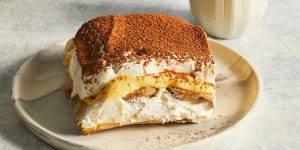
30 interesting facts about Spanakopita
- 👁️ 358
Spanakopita, a traditional Greek dish, has won the hearts of food enthusiasts around the world with its crispy, flaky texture and rich, flavorful filling. This savory pie combines the simple yet delicious ingredients of spinach, feta cheese, onions, and herbs wrapped in layers of phyllo dough. Often served as a snack or an appetizer, spanakopita is a staple in Greek cuisine and has a history that stretches back to ancient times. Its popularity extends beyond Greece, appearing in various forms in the Mediterranean and Middle Eastern culinary scenes. Here are thirty interesting and informative facts about spanakopita, celebrating its culinary heritage and universal appeal.
- Spanakopita literally translates to “spinach pie” in Greek.
- The dish is traditionally made with phyllo dough, spinach, feta cheese, onions, olive oil, and a mixture of herbs such as dill and parsley.
- Spanakopita is believed to have origins in ancient Greece, where similar spinach and cheese pastries were prepared.
- The modern version of spanakopita likely evolved during the Ottoman Empire, influenced by Turkish cuisine.
- Spanakopita is commonly served during the Greek Orthodox fasting seasons, especially during Lent when meat is traditionally avoided.
- Each region in Greece may have its own variation of spanakopita, using different greens or additional types of cheese.
- The phyllo dough used in spanakopita is known for its paper-thin layers, which become flaky when baked.
- Homemade phyllo dough can be made with flour, water, a little oil, and vinegar but commercially prepared phyllo is most commonly used today.
- Spanakopita can be made in a large pan and cut into squares or rolled into individual triangular servings.
- The dish is rich in iron due to its high spinach content.
- Feta cheese, a key ingredient, is traditionally made from sheep’s milk or a mixture of sheep and goat’s milk in Greece.
- Authentic Greek spanakopita often includes a pinch of nutmeg or lemon zest to enhance the flavors.
- Spanakopita is not only popular in Greece but also among Greek communities worldwide, especially in the United States and Australia.
- The pie can be served hot or at room temperature, making it a versatile option for gatherings and events.
- Spanakopita is often accompanied by tzatziki sauce, a cucumber yogurt dip, for a refreshing balance.
- The dish is a good source of vitamins A and C, which come from the spinach.
- Spanakopita is sometimes made with other greens like Swiss chard, leeks, or sorrel mixed with the spinach.
- It can be eaten as a main dish, side dish, or a portable snack, reflecting its versatility in Greek cuisine.
- In Greece, spanakopita is often sold in bakeries and street food stalls as a quick meal option.
- The preparation of spanakopita can be labor-intensive, especially when making the phyllo dough by hand.
- Spinach was introduced to Greece from Persia, and it became a staple ingredient in dishes like spanakopita.
- Spanakopita is an excellent example of Mediterranean diet cuisine, which is known for its health benefits.
- Many Greek festivals and celebrations feature spanakopita on their menus.
- Frozen spanakopita has become popular in many supermarkets around the world, offering a quick and easy way to enjoy this dish at home.
- The key to perfect spanakopita is ensuring the spinach is well-drained to prevent a soggy pastry.
- Spanakopita has been featured in numerous cookbooks and cooking shows, highlighting its popularity beyond Greek borders.
- The triangular shape of individual spanakopita servings is said to symbolize the Holy Trinity in the Greek Orthodox faith.
- Spanakopita remains one of the most iconic dishes served in Greek restaurants globally.
- Traditional recipes may use up to 20 layers of phyllo dough, contributing to its characteristic flaky texture.
- Spinach, the primary ingredient, was once considered by ancient Greeks as a symbol of prosperity and good health.
Spanakopita is much more than just a spinach pie; it is a cherished dish steeped in history with a legacy that extends through centuries of Greek culinary tradition. Its delightful combination of flaky pastry, tangy feta, and nutritious spinach celebrates the simplicity and richness of Mediterranean flavors. As a beloved staple in Greek cuisine, spanakopita not only offers a taste of Greek culture but also embodies the convivial spirit of sharing good food. Whether enjoyed in a cozy kitchen in Athens or as a homemade treat elsewhere in the world, spanakopita continues to be a symbol of culinary craftsmanship and cultural pride.











